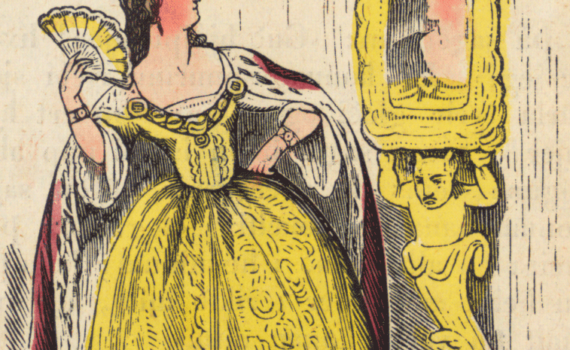Monthly Archives: May 2022
This is a Zero Textbook Cost course, which uses OER (Open Educational Resources) in lieu of a textbook. All required materials can be accessed in the Weekly folders.
Please visit the Blackboard home page for your section and access the E-learning Orientation on the gray navigation panel. This is a mandatory assignment and should be completed by the end of the first week. A 20-question quiz at the end of Week 2 will include material from the Orientation.
Click here to create an account with Commonlit. This is a zero textbook course (ZTC), and many of the assignments will come from this interactive website. Please create your student account right away so that you do not miss any assignments. Your class code is: NV85JY8 The name of the class is: ENG 201. Thank you for your cooperation.
This is an asynchronous online course. There are no Zoom meetings nor in-person sessions. Each week, you are responsible for completing all the tasks on each weekly page. The tasks are varied and include reading, listening, viewing, and discussing activities. Each week begins on Monday and ends on Sunday. From time to time, you will be directed or linked back to the Blackboard platform to take quizzes or submit essays. Your grades will still be recorded in the Blackboard grade center. Be sure to check on your progress during the semester. Professor Conway can always be reached by email a cconway@bmcc.cuny.edu
Even in an online course, lively discussions are at the heart of an interesting class. These are the main forums for interaction in an online course and are also the primary means of showing your presence in the class. Our discussion forums are different than most because you will be interacting with students from all my ENG 201 sections, not just your own. This is a big community! The weekly discussions can be accessed in two ways: through the main menu (above) or through the page for each week (side menu). Directions and prompt appear when you click on the discussion board. Discussion Board Etiquette Please respond in full sentences in correct English (not in texting language). Please use upper and lower case. Disagreement with the opinions of others is fine–even encouraged—but please show respect for fellow classmates in your responses.
Class participation via the discussion board makes up a significant percentage of your overall grade (20%). How to receive full credit (100%) for each weekly discussion board. Submit your first post by Friday of each week at the latest. This is worth 80% of the weekly grade. Respond to the post of one other student by Sunday. This is worth 20% of the weekly grade. Make sure your first post is at least 150 words in length. Make sure your response to another student is at least 75 words. Comments such as “Nice post” or “I agree” are friendly but will not receive credit. Make sure you post in the week in which the discussion was assigned. For example, post your Week 3 response during Week 3. A few other notes about discussion board grading The highest grade an original post can receive if it is submitted on the weekend is 75% Posts submitted as attachments will not be opened. Discussion boards cannot be “made up.” This is because once a discussion has closed, there is no one in the forum with whom to discuss anything. Understand that if everyone posted on the weekend, there would be no ongoing discussion during the week.
The High Cost of Plagiarism Plagiarism will be dealt with firmly. A student who plagiarizes will receive a permanent grade of zero (0) for the essay or discussion in question. All essays will be submitted through Turnitin, which features plagiarism detection capability. Suspected plagiarism, even if it passes the Turnitin detection function, will be turned over to the Student Life Manager for Student Conduct and Academic Integrity. If you hope to pass this class, do not plagiarize. Every student is required to view the short plagiarism video in order to have a complete understanding of what plagiarism is. This will preclude the excuse that anyone has “accidentally” plagiarized.
Essay Due Dates Essay Introduction due: Sunday, March 5 (See Week 5 for details). Essay First Draft: Sunday, March 26 (See Week 8 for details). Research Summary due: Sunday, April 4 (See Week 10 for details). Essay Final Draft due: Sunday, April 23 (See Week 12 for details ). In order to be reviewed all essays must contain a Work Cited page. Under this, students must sign an Academic Integrity Pledge. Please type the following and type your full name. I hereby pledge that the information in this essay is my own original work and that all phrases or quotes taken from other sources have been correctly identified via quotation marks/in-text citation. YOUR NAME
Welcome to Week 15 of our course. This week we will be reading several works centered on the Snow White Story. These include the fairytale “Little Snow White” by the Brothers Grimm and the poem “Snow White and the Seven Dwarfs” by Anne Sexton. An excerpt from the book The Uses of Enchantment by famed psychologist Bruno Bettleheim will add much to think about with respect to themes and symbolism. These works should be especially interesting as they follow last week’s reading of what some have called Joyce Carol Oates’ “inverted fairytale,” “Where Are You Going, Where Have You Been?”
Welcome to Week 14 of our course. This week we will be returning to the short story form for a reading of Joyce Carole Oates’s chilling work “Where Are You Going, Where Have You Been?” Warning: It may give you nightmares. There is no quiz this week.
Prompt: In her critical overview of “Where Are You Going, Where Have You Been?” (Activity 2) scholar Rena Korb discusses several different interpretative views of the story. One interpretation reads the story as a sort of “inverted fairy tale.” Other critics see the story as “a tale of initiation” into the evils of a depraved American culture. Still others may read the story as a “feminist allegory.” Ideas in these interpretations often overlap, and there is no one simplistic key to understand the story. With specific eference to the article by Korb, discuss your own understanding of the story, which may include ideas not mentioned by the critic. To submit your Week 13 post, follow the steps below. 1. Scroll up to the black strip at the top of the screen and click the black “plus” sign inside the white circle. It is located to the right of the course title. 2. In the box that reads “Add title,” type in a title that includes your first name, last name, and the words “Discussion 13” (example: John Hart Discussion 13). 3. Type your response in the text box. Remember that your first post must be at least 150 words in order to receive full credit. 4. Navigate to the right side of the screen and choose the Post Category “Week 13 Discussion” (or whichever week is current). Never choose anything in the box that reads “Category Sticky.” Click for screenshot. 5. To add media (optional), click the “add media“ button in between the title box and the text box. Do not add the image directly to the media library. To get the image to show in the tile preview, go to “featured image > add featured image, in the lower right-hand side.” Click for screenshot. 6. Publish the post by […]











